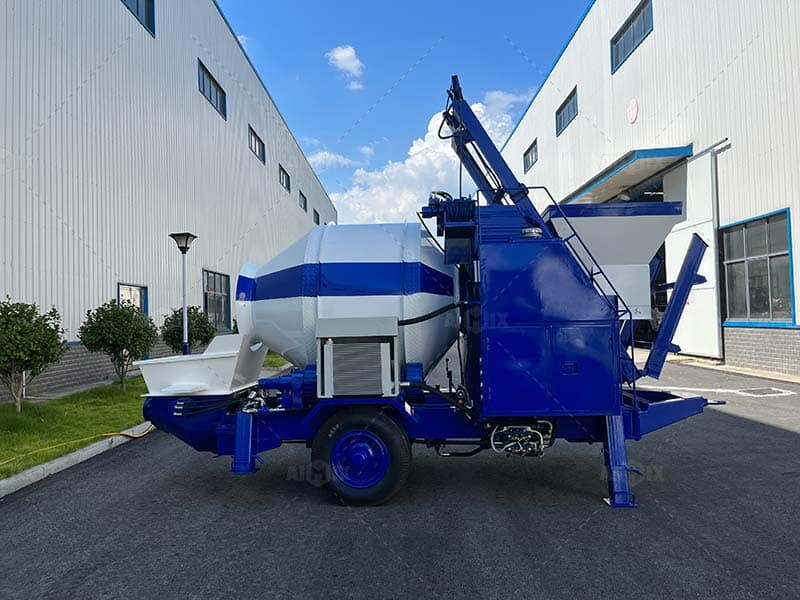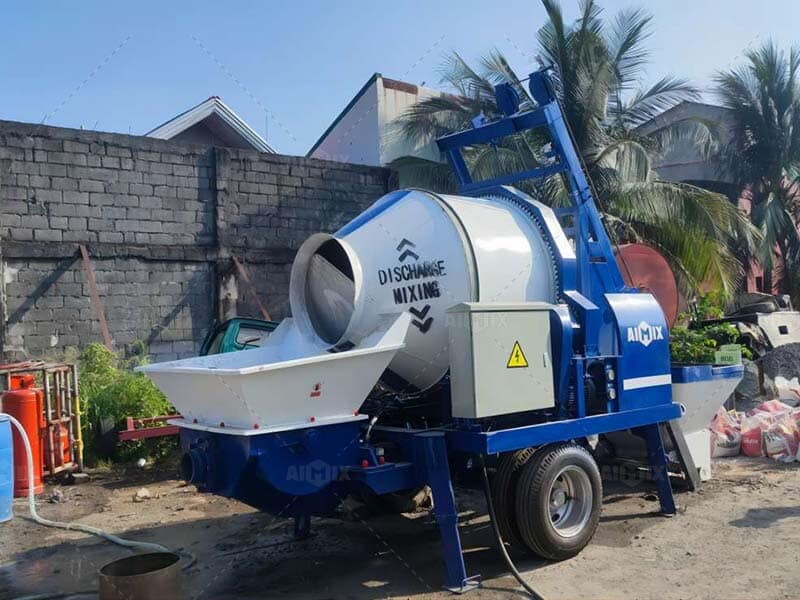Operating a small concrete pump demands strict adherence to safety protocols to prevent equipment malfunctions, workplace hazards, and potential injuries. Whether used for residential construction, foundation work, or small-scale infrastructure projects, ensuring proper handling and maintenance of these small concrete pumps is essential. By following pre-operational inspections, safe pumping techniques, and post-use maintenance, operators can enhance efficiency while minimizing risks.
Pre-Operational Safety Measures
Before starting a small concrete pump, a meticulous inspection of the machine and its components is essential. Operators should examine the hydraulic system, electrical connections, and mechanical parts to identify any leaks, loose fittings, or worn-out seals that could compromise functionality. Properly lubricating moving parts prevents unnecessary friction and prolongs equipment lifespan.

Stabilization is a critical factor when positioning the pump on-site. The machine must be placed on a level, compact surface to prevent tilting or shifting during operation. Outriggers, if applicable, should be fully extended and secured to enhance structural stability. Any slope or uneven terrain can lead to dangerous machine movements, increasing the risk of tipping.
Additionally, all hoses and pipelines should be checked for wear, cracks, or obstructions before pumping begins. Blockages or weak hose connections can lead to sudden bursts of pressurized concrete, posing serious risks to nearby workers. Ensuring proper pipeline alignment and secure couplings prevents unexpected material discharges and helps maintain consistent flow.
Safe Operation Practices During Pumping
Controlling the concrete flow rate is crucial for both productivity and safety. Excessive pumping pressure can strain the equipment and cause sudden hose recoil, while insufficient pressure may lead to blockages. Operators should adjust the pump’s output according to the mix consistency and pipeline length, ensuring a smooth and steady discharge.
Blockage prevention is a top priority. Any interruption in flow can cause dangerous pressure build-up, potentially leading to pipe ruptures. If a blockage occurs, the concrete mix pump should be immediately stopped to relieve pressure before attempting to clear the obstruction. Never strike or manually force clogged areas, as sudden releases of material can cause injuries.
Personal protective equipment (PPE) should be worn at all times. This includes safety helmets, gloves, protective boots, and high-visibility vests to protect against accidental splashes and debris. Concrete mix contains alkaline components that can cause skin irritation, making proper protective gear an essential aspect of operational safety.

Post-Operation and Maintenance Safety
Once pumping is complete, thorough cleaning of the system is required to prevent hardened concrete buildup inside the hoses and pump chamber. Flushing the system with water and an appropriate cleaning solution ensures that residual material does not obstruct future operations. Any remaining debris should be removed from valves, filters, and discharge areas to maintain unrestricted flow.
Regular maintenance is essential for long-term safety. Components such as pistons, wear plates, and seals must be inspected and replaced as needed. Neglecting routine maintenance increases the likelihood of mechanical failures and unexpected downtime, potentially compromising the integrity of the mini concrete pump for sale. Keeping a maintenance log helps track servicing intervals and ensures that all critical parts remain in optimal condition.
Finally, proper storage of the pump and accessories minimizes hazards when the machine is not in use. Hoses should be coiled neatly and stored in a dry area, preventing kinks and premature wear. Electrical components should be protected from moisture exposure, and fuel-powered units must be stored with adequate ventilation to prevent fire risks.
By adhering to comprehensive safety measures before, during, and after operation, mini concrete pump operators can maintain efficient performance while safeguarding both personnel and equipment. Prioritizing safety ensures long-term reliability, cost savings, and a reduced risk of accidents, making these machines an asset rather than a liability on any job site.

